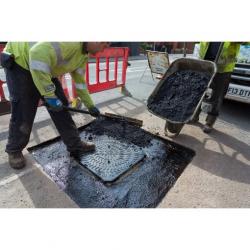Specifications should start with compliance - not finish with it
 In order to build the right specification to maximize whole-life costs for access covers and gratings, a two-tiered approach must be adopted, as our Marketing Manager, Paul Thompson, explains;
In order to build the right specification to maximize whole-life costs for access covers and gratings, a two-tiered approach must be adopted, as our Marketing Manager, Paul Thompson, explains;
When you’re looking to optimise your specifications, firstly you must recognise that manufacturing standards must be adhered to. Secondly, it is vital to garner an understanding of the specific environmental and situational factors that could impact the asset, and therefore the specification.
Ensuring that any asset is selected in accordance with good specifications is incredibly important, especially when you consider the sheer amount of money that is spent on correcting failed ironworks every year. Indeed, in a guidance paper produced in conjunction with both the Highways England and Transport Scotland, the paper is quoted directly as saying: “The premature failure of chamber top and gully top installations has been shown to be a major contributory factor to the annual maintenance budget of UK roads”.
Standards have an important role to play in the creation of successful specifications, helping authorities to avoid selecting poor products that are unfit for purpose. However, whilst specifying products that adhere to recognized standards is important, factors that aren’t addressed in the standards also need to be considered.
This is why such standards should only form the base requirements for a specification, to which other industry-specific and client-specific requirements are overlaid. A good specification will take into account environmental factors such as traffic density and flow and contributory factors such as theft protection or anti-skid surfacing.
In addition, specifiers must think about adoption of a full -system; a well-chosen access cover is still prone to failure if it’s installed using poor quality materials or working practices. By taking a holistic approach to installations through careful selection of both the access cover and the supplementary products, as well as supporting installers through training programs, organisations can maximise whole life costs for street ironwork.